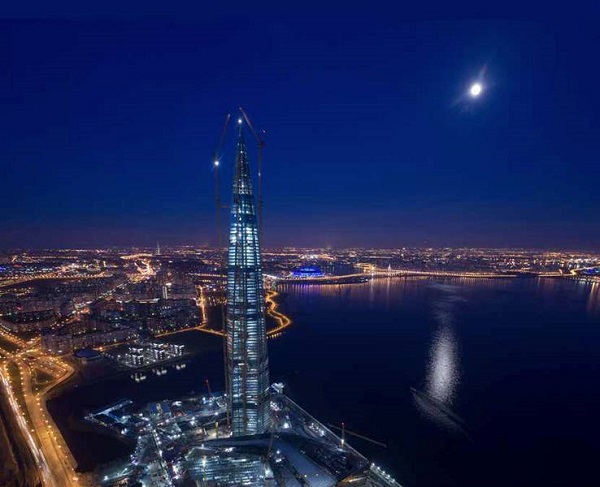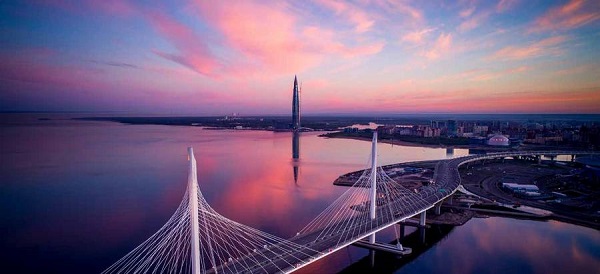Post Time:Dec 30,2018Classify:Industry NewsView:4940
Resembling a needle, Europe’s tallest building spirals 462 meters into the sky. The ,Star of St. Petersburg‛, as the building is already being called, occupies a 170,000 m2 footprint on the shores of the Gulf of Finland in the Primorsky District, some 10 km northwest of St. Petersburg’s city center. Designed by the RMJM partnership under Tony Kettle’s direction, the project was managed by ZAO Gorprojekt; and the work planned by Samsung Production.
As a modern business center with many public functions, the building is intended to form the hub of a new downtown and take the strain off the historic city center. The high-rise will serve as the new headquarters of Russian gas producer Gazprom, which is also the client, but on completion, there will also be, among other things, a sports facility, a planetarium, a restaurant, and an amphitheater, where aquatic shows will be staged.

3,000 people are involved in the construction proper, with some 600 Russian and international companies and over 20,000 people from 18 countries involved in the project’s full realization. Construction got underway in 2012 and completion is scheduled for the end of 2018.
Anyone who closely followed the 2018 World Cup in Russia had the opportunity to admire the new Lakhta Tower due to its proximity to the St. Petersburg World Cup stadium, with the city’s new landmark being captured by the cameras of the world’s broadcasting stations time and again.
Only shortly before the start of the World Cup did the fitters from façade constructor Gartner − aided by roped industrial climbers − install the last of the 3 x 4 m glass panes at heights of over 300 m, without helicopter assistance. This oversized needle, with its curved glass façade, now stands majestically over the Gulf of Finland, welcoming approaching cruise ships from afar.

Glass atriums, each two storeys high on all five exterior sides, can be naturally ventilated and, coupled to other energy-saving technologies, make the tower a truly ‚green building‛, with a LEED Gold label being envisaged. The highly thermally insulated façade, its improved use of daylight – thanks to panoramic glazing − and natural ventilation play key roles in this respect. The Lakhta Center is already one of the world’s tallest buildings capable of being naturally ventilated.
Trosifol™ partner Josef Gartner GmbH in Gundelfingen in southern Germany installed the 100,000 m2 façade − equivalent to the size of about 14 soccer fields and thus larger than the playing areas of all Russian World Cup stadia put together.
For this, Gartner produced some 16,600 individual elements of steel, aluminum, and cold-bent glass, all with different weights − up to 700 kg − and of different sizes. Since no two storeys are the same in this spiral skyscraper, the engineers had to calculate different dimensions for almost every element.
Source: www.trosifol.comAuthor: Shangyi
PrevNew Tecglass tools and services for the Automotive industry
FGS brings the spirit of creativity to glazed façade of iconic Speyside distilleryNext